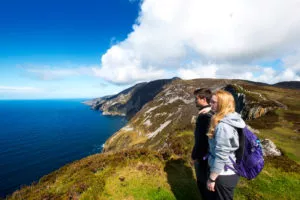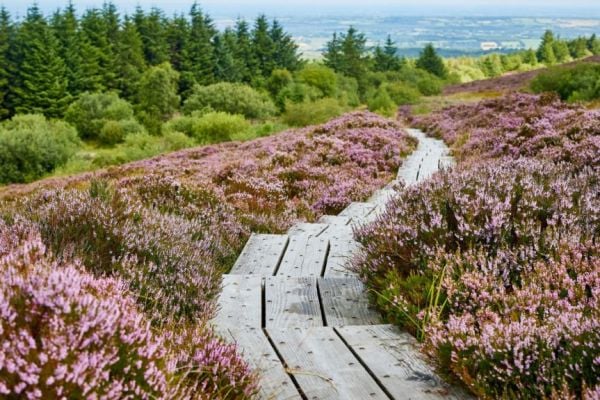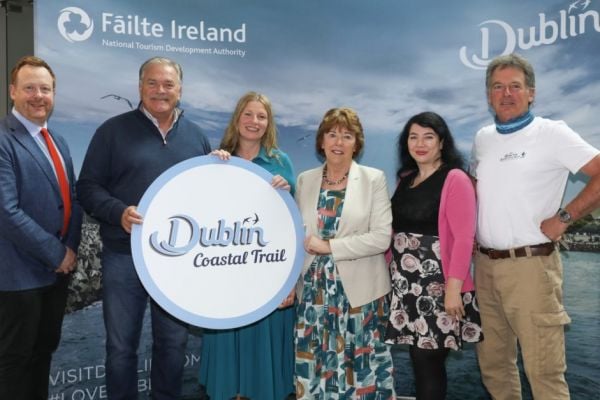It would appear that Donegal has it all - great beaches, beautiful cliffs, excellent seafood, and some of the best golf courses in the world.
There is a lot to do in the county and visitors will never be bored with hiking, surfing and fishing, being just some of the activities that Donegal is famous for.
The Top 10
With all these factors in mind, Hospitality Ireland decided to examine the top ten visitor attractions in Donegal, based on Fáilte Ireland's Visitor Attractions Survey 2019, which was carried out by SRI in the third quarter of 2020.
The year 2019 was chosen as a good indicator because it was pre-covid and so the sample was more in line with tourists behaviour in normal circumstances, rather than during an exceptional event like the coronavirous pandemic.
1. Glenveagh Castle and Gardens
(199,198)
Glenveagh Castle is the top attraction in Donegal with 199,198 visitors as of 2019.
The castellated mansion designed by John Townsend Trench was built between 1867 - 1873, and is modelled on early Irish tower houses. Its remote mountain setting was inspired by the Victorian idyll of a romantic highland retreat.
Glenveagh extends over 16,000 hectares of north Donegal and regularly hosts special seasonal events.
The Synge & Byrne Restaurant and Tea Room is located in the Glenveagh Visitor Centre and accommodates 100 people.

2. Sliabh Liag Cliffs
(192,000)
Sliabh Liag, is one of the highlights of the Wild Atlantic Way in Donegal, with coastline cliffs standing almost 2,000 feet high.
A €4.95 million Sliabh Liag Strategic Development Project was officially launched in May to enhance the visitor experience.
A new 2.5 kilometre stretch of upland path is a key element of the new development project, which includes a visitors centre and transportation hub, car parks, a ranger station, and enhanced roads access. The new path is designed to ensure that they can enjoy the cliffs, while protecting the environment into the future.
Sliabh Liag Boat Trips depart from Teelin Pier on the North side of Donegal Bay and there is a variety of trips available including angling, sightseeing, diving and more. There is also the possibility of spotting whales or dolphins on this route.

3. Grianan of Aileach
(96,154)
The origins of the Grianán of Aileach fort go as far back as 1700 BC.
It is linked to the Tuatha de Danann who invaded Ireland before the Celts and built stone forts on top of strategic hills.
Grianán of Aileach is situated on a hilltop 250m above sea level with stunning views of Lough Foyle and Lough Swilly.
The outline of Bronze Age or Iron Age ramparts can be seen below the fort.

4. Glencolumbkille Folk Village Museum & Heritage Centre
(60,000)
Glencolmcille Folk Village is a thatched-roof replica of a rural village which offers a glimpse into daily life as it was during past centuries.
The Folk Village Museum is a cluster of several small cottages, called a ‘clachan’, perched on a hillside overlooking Glen Bay Beach in the Gaeltacht (Irish-speaking area) of South West Donegal. Each cottage is an exact replica of a dwelling used by the local people in each of the 18th, 19th and 20th centuries and is equipped with the furniture, artifacts and utensils of its particular period.
A reconstructed school house, fisherman’s dwelling and tiny pub-grocer offer additional insights into rural Irish life in one of the most remote corners of the country. The village is designed, built and maintained by local people.

5. Donegal Castle
(55,310)
Donegal Castle is a restored 15th Century, Norman tower house, located in the centre of Donegal Town.
The castle was originally built by the O’Donnell chieftains in the 15th Century, beside the river Eske.
It was rebuilt in Jacobean style in the 16th Century by Sir Basil Brooke, after Hugh O’Donnell burnt it to the ground rather than let it fall into enemy hands.
Guided tours are available.

5. Triona Design Donegal Tweed Centre
(52,500)
The Triona Design Donegal Tweed Centre is located in Ardara and remains the epicentre of Donegal Tweed production to this day.
The Visitors Centre is based in the location where Donegal Tweed was born, and within the center, visitors can watch master weavers working on looms that have been used for centuries. It also features a replica weavers cottage and a tax-free Shop.
The building that houses Triona Donegal Tweed Visitor Centre is known locally as the 'Mart' and once housed over 60 weavers from the local area. The visitor shop offers a large selection of Irish Sweaters including Aran Woollen Mills, West End Knitwear, and Fisherman out of Ireland which is also made in Donegal.

6. Ionad Cois Locha
(50,000)
At Ionad Cois Locha, visitors are offered a snapshot of what life was like back in the last century.
Visitors can watch a demonstration of carding, spinning and weaving. Afterwards, there is a tour of the weaver’s cottage.
There are plenty of activities for children such as rope climbing, bumping cars, paddle boats, bungee jumps, a playground, and much more.

7. Lurgybrack Open Farm
(45,000)
Lurgybrack Open Farm is a place for all the family to see animals and have fun.
The centuries old farm building is home to a range of friendly farm animals that children can come face to face with.
Visitors are encouraged to play safely, wander by the riverside, walk or just relax.

8. Oakfield Park
(37,289)
Oakfield Park in Raphoe is a privately owned estate and railway, which has won several National awards for the restoration of its gardens and buildings.
It offers parklands, lakes, and mature woodlands overlooking the distant Croaghan Mountain. The grounds include a hedge maze, sculptures, and miles of walking paths.
Oakfield Park has over 4.5km of Ireland’s longest miniature-gauge railway which weaves its way through the trees, revealing many pleasing vistas. The heritage railway takes on a journey around the lake, passing by the Castle Folly, the Tree Circle with the Orb and the Long Sleeper sculpture on the Spiral Mound before returning to the station.
There is a restaurant on-site called Buffers which uses produce from the walled garden to serve light bites, hot dishes and sweet treats.

9. Glebe House and Gallery
(32,257)
Glebe House was the home for nearly thirty years of the renowned artist Derek Hill.
Originally known as St Columb’s, the 1828 Regency-style house is decorated with William Morris textiles, and collections of Islamic and Japanese art, as well as 300 works by leading twentieth-century artists such as Picasso and Kokoshka.
The house and gardens are displayed in an informal manner, as though Derek Hill was still in residence.

10. Doe Castle
(31,439)
Doe Castle is located in Sheephaven Bay.
The fortress was built in the 1420s. For almost 200 years it served as home, refuge and bastion for at least 13 MacSweeney chiefs.
MacSweeney chief Eoghan Og II gave shelter to survivors of the 1588 Spanish Armada fleet at Doe. The last chief of the castle, Maolmhuire an Bhata Bhui, joined Red Hugh O’Donnell, lord of Tyrconnell, for the Battle of Kinsale in 1601.
An carved and ornamented Mac Sweeney grave-slab, dating from 1544, is on show inside the tower house.








